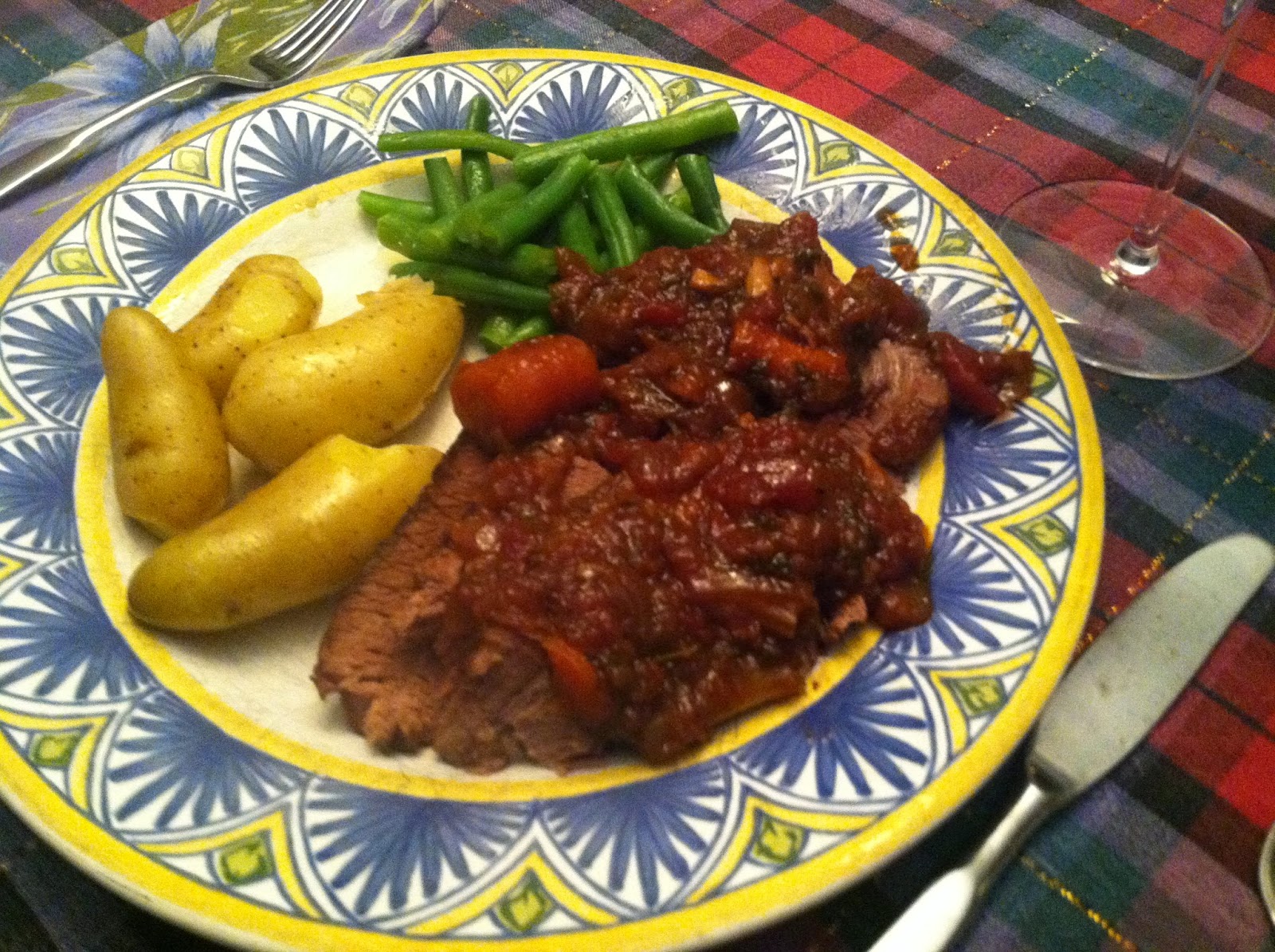Everybody has a brisket recipe, and they are all delicious. Some have exotic ingredients such as grape jelly, cranberry sauce, chili sauce, etc. Here’s mine; it is pretty basic. This is cold weather comfort food.
Ingredients
3 TBS extra virgin olive oil
1 first-cut beef brisket (I used a grass-fed one) about 5 LBS
5 yellow onions, chopped
4 carrots cut into 1 inch pieces
4 stalks celery cut in 1 inch pieces
4 clove of garlic, smashed, peeled, and cut in half
½ tsp dried thyme
1 TBS chopped fresh rosemary
3 TBS chopped fresh parsley
2 bay leaves
1 cup red wine
1 cup beef stock or broth
½ cup of apple cider vinegar
1 14 OZ can of chopped tomatoes
Kosher salt and freshly ground black pepper for seasoning
Recipe
Preheat oven to 325 degrees F. Wipe the brisket with paper towels, and generously salt and pepper it. In a large oven-proof lidded casserole heat oil over medium high heat and carefully brown brisket without burning until it is nicely browned. Remove meat and put it on a platter. Add onions, carrots, celery, and garlic and sauté, stirring regularly until they are browned.
Add the wine, stock, vinegar and tomatoes and the herbs.
Bring to a simmer, put the meat on top, cover tightly and put it in the oven for about 3 ½ to 4 hours, depending on the size of your meat (grass fed seems to need a bit more time in the braise.) Some recipes have you turn it or baste it. This seems like extra work to me. I check it once at the half-way mark to make sure there is enough liquid in it.
When it is tender take it out and let it sit for 20 or 30 minutes until it is cool enough to cut pieces across the grain. Better yet, put the whole thing in the fridge and serve it the next day or two.
The traditional way is to serve it with potato pancakes, which is mighty tasty, but some extra work.
I served these with fingerling potatoes and steamed green beans. A sturdy red wine (perhaps a Cote de Rhone or something from Spain) would not be out of place.
(Photos: R.L. Floyd)




